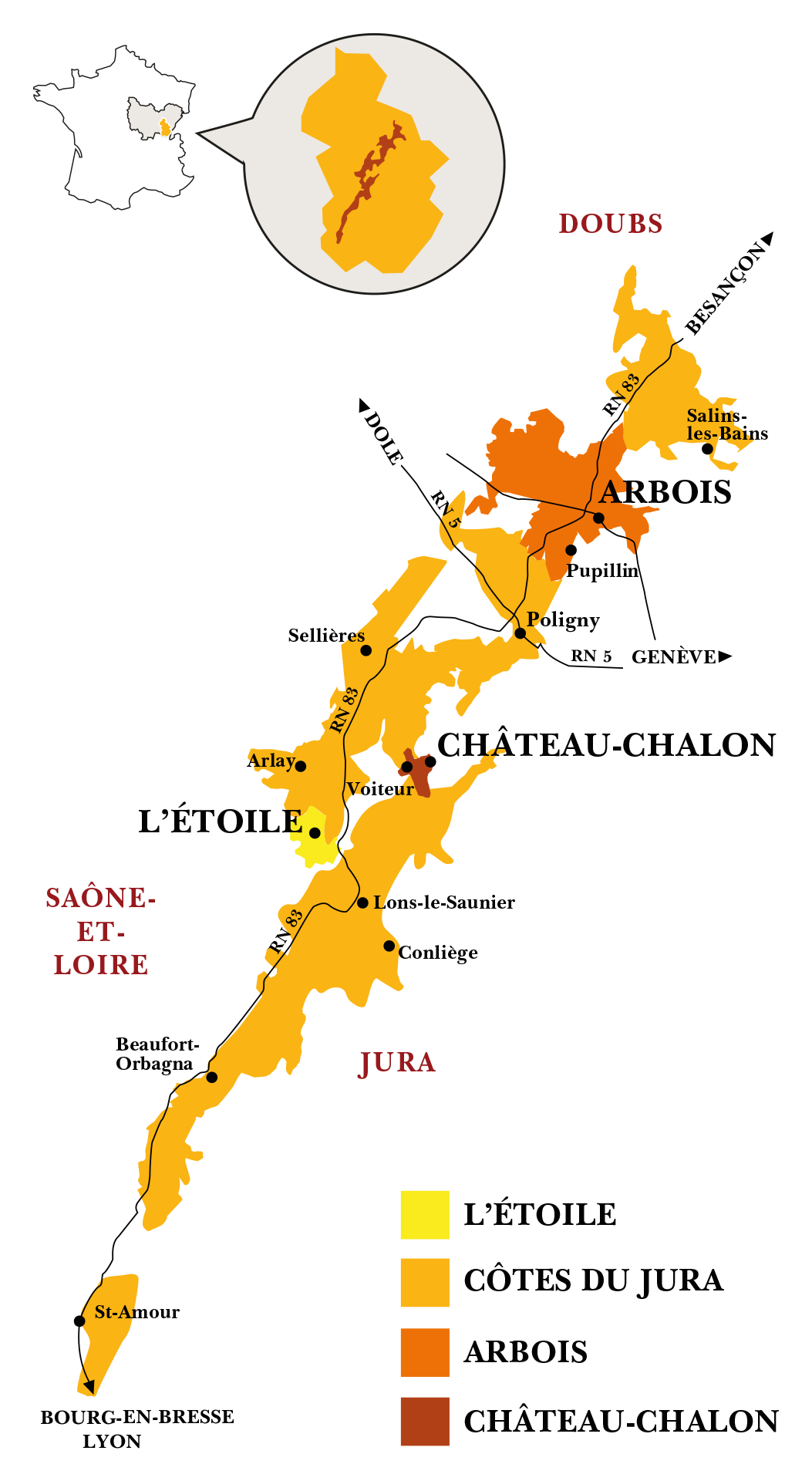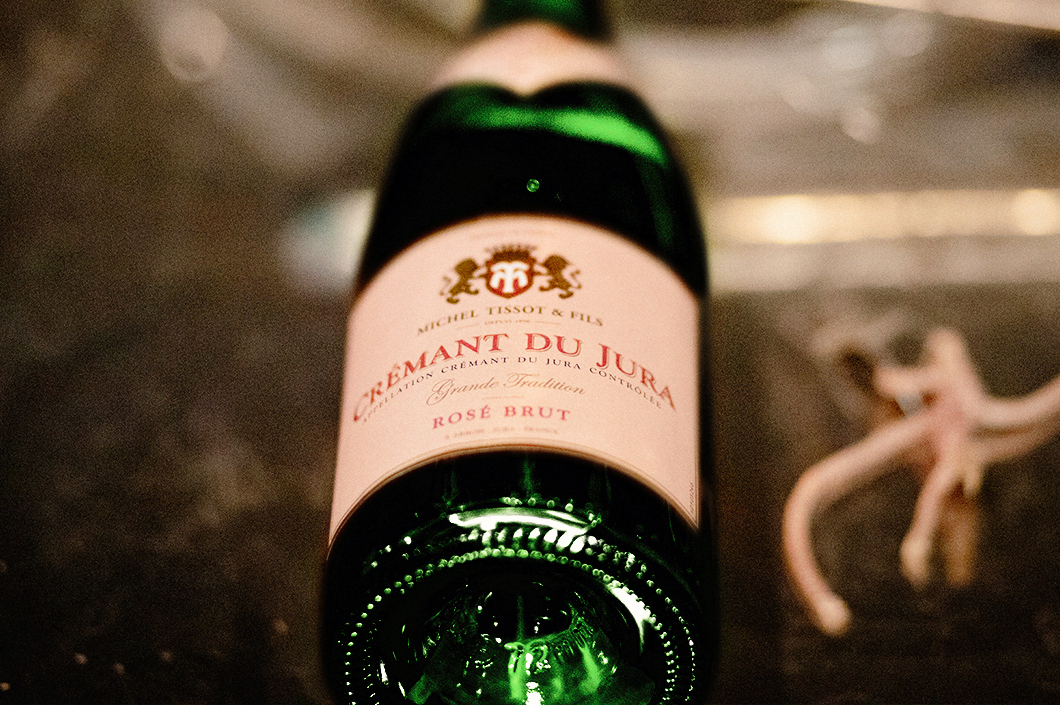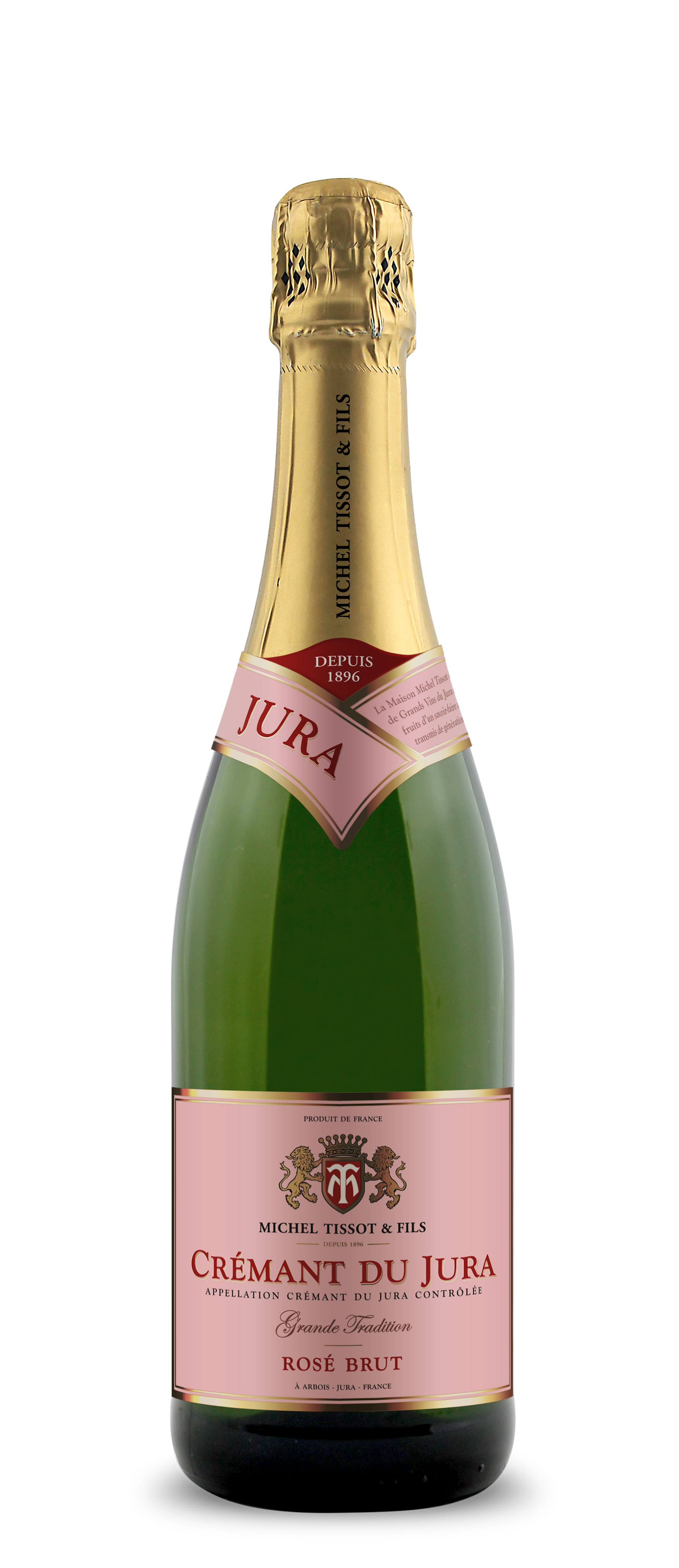CRÉMANT DU JURA ROSÉ
GRANDE TRADITION
Grape Varieties
A typical Jura blend of Pinot Noir with a hint of Trousseau and Poulsard.
Tasting notes
Attractive pink colour.
Fresh, expressive nose, with hints of small red berries.
The notes perceived in the nose (redcurrant, cherry) reappear in the mouth. The finish is fresh and greedy, marked by a clear vivacity.
Food and wine paring
As a celebration wine per excellence, this Crémant du Jura Rosé is ideal for an entire meal, from the appetizers to the dessert. For exemple a fish cooked with soft spices or a red fruits dessert, like a strawberry soup.
Serving suggestions
Serve chilled between 8 and 10°C (46-50°F).
Ageing potential
Its freshness is best appreciated young, and it can be kept for 2 years.
Appellation
The Crémant du Jura AOC was awarded on 9 October 1995. Sparkling wine production in the Jura dates back to the end of the eighteenth century, when Jura winegrowers already mastered the traditional method. The appellation area for Crémant du Jura is identical to that for Côtes du Jura, Arbois, Château-Chalon and Etoile. The grape varieties authorised for its production are Poulsard, Pinot Noir, Trousseau, Chardonnay and Savagnin. For white wines, Chardonnay B, Pinot Noir N and Trousseau N must account for at least 70% of the cuvée. For rosé wines, the volume produced from black or grey grape varieties is greater than or equal to 50% of the cuvée.
The grapes, which must be harvested by hand, are transported in perforated crates and pressed in whole bunches. Since its creation in 1995, Crémant du Jura production has grown steadily, accounting for around 16% of total Jura AOC production, from a surface area of 282 hectares, averaging 17,300 hectolitres a year.
Winemaking
Manual harvest. Harvested grapes are transported in crates drilled with holes to keep the fruit integrity. Pressing is done using whole, uncrushed grapes. The last pressed grapes are separated and distilled after fermentation. Maturation on lees lasts at least 12 months.
Dosage : 10 to 12g of sugar per liter (Brut).
Awards
January 2023 - CONCOURS NATIONAL DES CREMANTS - Gold medal
January 2023 - SAKURA Japan Women's Wine Awards - Silver Medal






